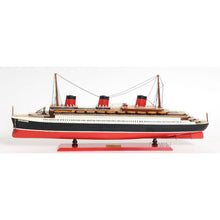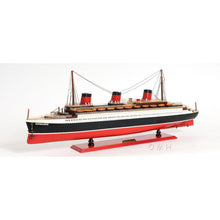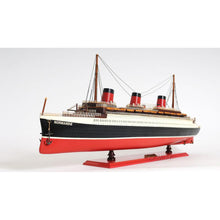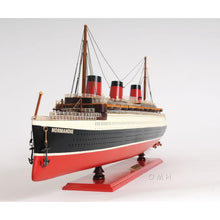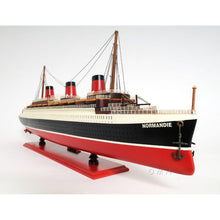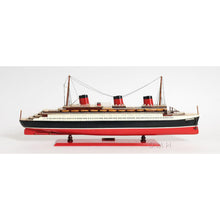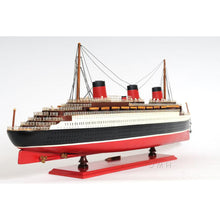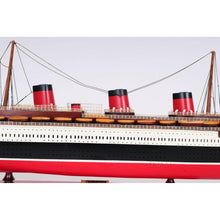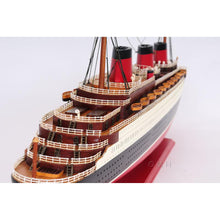L: 41 W: 5.5 H: 14.5 Inches
The T.S.S. NORMANDIE was one of the finest ocean liners ever produced by France. Have it displayed beautifully in your home or office!
Master craftsmen handcraft these highly detailed wood models from scratch using historical photographs, drawings and original plan. They are built to scale with high-grade wood such as: western red cedar, rosewood, and mahogany. They are 100% hand built individually using plank-on-frame construction method and are similar to the building of actual ships. Each model requires hundreds of hours to finish and must go through a demanding quality control process before leaving the workshop. The model comes with the mast down to save on shipping cost.
Hundreds of detailed pieces went into the construction of this model. There are multiple wood decks. You can see hundreds of open windows along the hull. Layers of stanchions with guardrails are placed all around the deck. Three magnificent smoke stacks with chimneys are carefully painted in red and black. Dozens of wooden lifeboats are all meticulously hand built according to scale.
This model is part of an exclusive edition with a unique laser cut serial number located behind the brass nameplate. It’ll make a perfect gift for home or office decorator, boat enthusiast, or passionate collector.
T.S.S. Normandie was one of the finest ocean liners ever produced -arguably the grandest ever. Second in size only to the Queen Elizabeth, running mate of the Queen Mary, the Normandie was created to represent the French nation and all it had to offer to the world. Her design and decor were innovative, distinctive and luxurious, which contributed to her being described as the "ultimate ocean liner" of the 1930s. Sadly, the Normandie burned and capsized in New York harbor during the war as she was being converted into the troopship Lafayette. Normandie was never recovered from the fire on February 9, 1942. Refloated and towed to the Brooklyn Navy Yard in September 1943 she was kept there for the remaining of the war and unwanted and unusable ended scrapped in Newark, NJ in 1946.



















